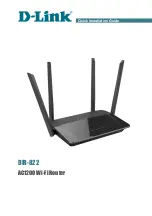
29-3
Cisco ME 3800X and 3600X Switch Software Configuration Guide
OL-23400-01
Chapter 29 Configuring IP Unicast Routing
Configuring IP Addressing
Note
The switch does not support tunnel interfaces for unicast routed traffic.
All Layer 3 interfaces on which routing will occur must have IP addresses assigned to them. See the
“Assigning IP Addresses to Network Interfaces” section on page 29-4
.
Configuring IPv4g routing consists of several main procedures:
•
To support VLAN interfaces, create and configure VLANs on the switch, and assign VLAN
membership to Layer 2 interfaces. For more information, see
Chapter 10, “Configuring VLANs.”
•
Configure Layer 3 interfaces.
•
Enable IPv4 routing on the switch.
•
Assign IPv4 addresses to the Layer 3 interfaces.
•
Enable selected routing protocols on the switch.
•
Configure routing protocol parameters (optional).
Configuring IP Addressing
IP routing requires that Layer 3 network interfaces are assigned IP addresses to enable the interfaces and
to allow communication with the hosts on interfaces that use IP. These sections describe how to
configure various IP addressing features. Assigning IP addresses to the interface is required; the other
procedures are optional.
•
Default Addressing Configuration, page 29-3
•
Assigning IP Addresses to Network Interfaces, page 29-4
•
Configuring Address Resolution Methods, page 29-7
•
Routing Assistance When IP Routing is Disabled, page 29-10
•
Configuring Broadcast Packet Handling, page 29-12
•
Monitoring and Maintaining IP Addressing, page 29-16
Default Addressing Configuration
Table 29-1
Default Addressing Configuration
Feature
Default Setting
IP address
None defined.
ARP
No permanent entries in the Address Resolution Protocol (ARP) cache.
Encapsulation: Standard Ethernet-style ARP.
Timeout: 14400 seconds (4 hours).
IP broadcast address
255.255.255.255 (all ones).
IP classless routing
Enabled.
IP default gateway
Disabled.
IP directed broadcast
Disabled (all IP directed broadcasts are dropped).
















































